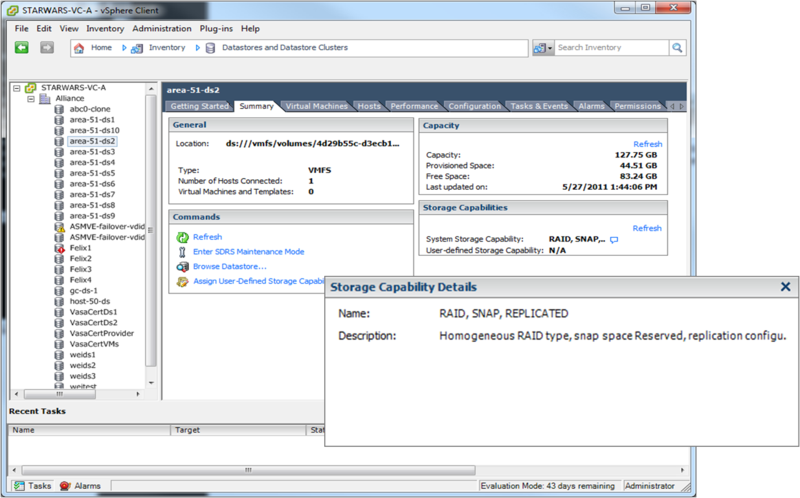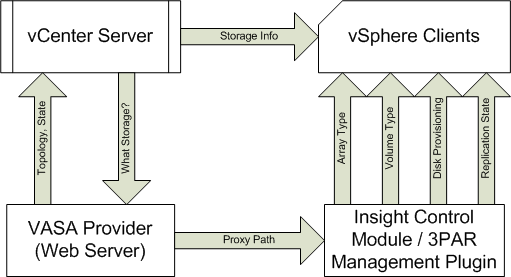Information
VMware vSphere vStorage API’s for storage awareness (VASA) is a set of software API’s that a storage vendor can use to provide information about their storage array to vCenter Server.
vCenter server gets the information from a storage array by using a software component called a VASA provider which is written by the storage array vendor. The VASA provider can exist on either the storage array processor or on a standalone host. The decision is made by the storage vendor. Storage devices are identified to vCenter server with a T10 identifier or an NAA ID. VMware recommends that vendors use these types of identifiers so that devices can be matched between the VASA provider and vCenter server
Information from the VASA provider is displayed in the VMware vSphere client.
What information can these API’s show?
- Storage Topology
- Storage Capabilities
- State of physical storage devices
- Health and usage of storage
- Performance capabilities such as number and type of spindles
- I/O Operations
- DR Information – RPO and RTO
- Space efficiency – Compression and Disk Format.
How does the VASA provider work?
The VASA provider acts as a server in the vSphere environment. vCenter server connects to the VASA provider to obtain information about available storage topology, capabilities and state. A VASA provider can report information about one or more storage devices and support connections to a single or multiple vCenter instances
Configuring a VASA Provider
If your storage supports a VASA provider, use the vSphere Client to register and manage the VASA provider. The storage providers icon on the vSphere Client Home Page allows you to configure the VASA provider. All system storage capabilities that are presented by the VASA provider are displayed in the vSphere Client
In vSphere 5.0, a new Storage Capabilities panel appears in the Datastore Summary tab.
Register a VASA Provider
To register a VASA provider, the storage vendor provides a URL, a login account and a password. Users log into the VASA Provider to get array informaton. vCenter Server must trust the VASA provider host. So a security certificate from the VASA provider must be installed on the vCenter server system.



